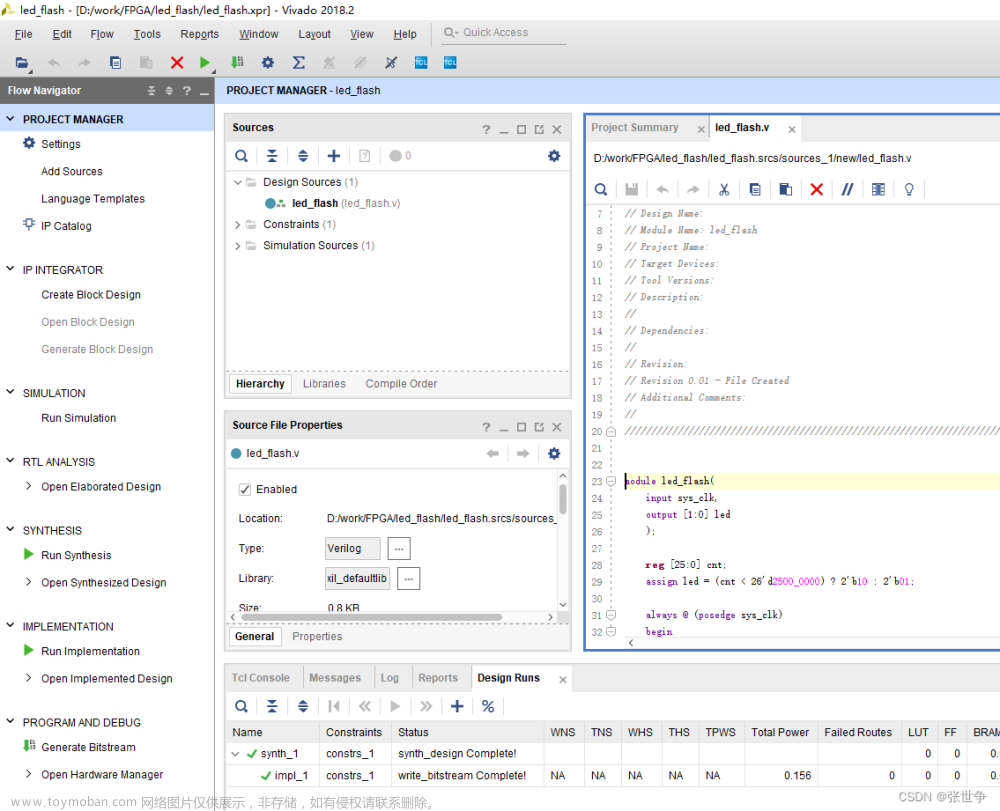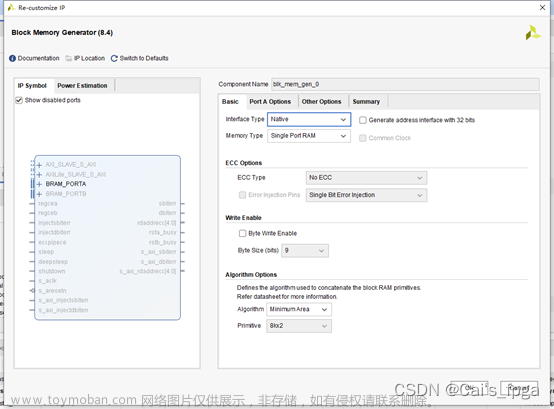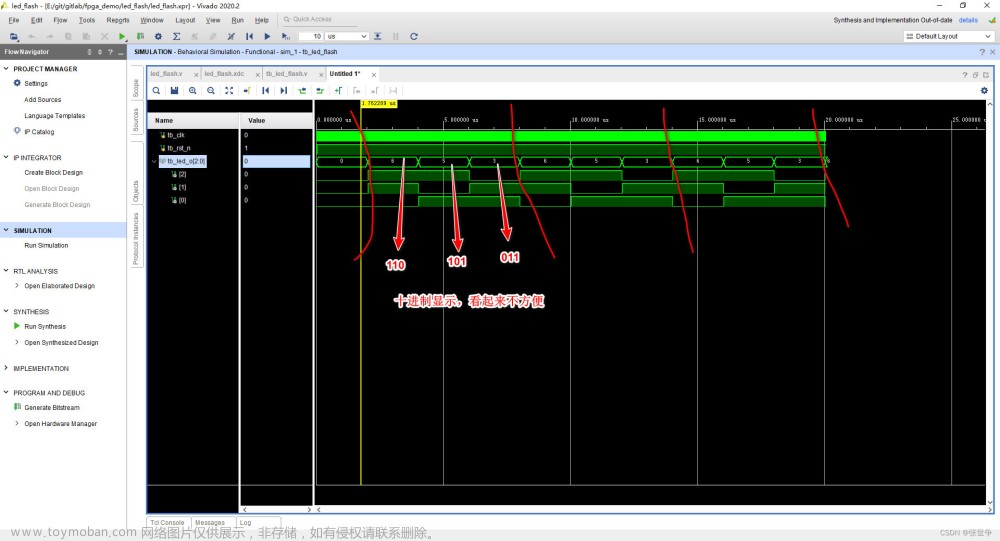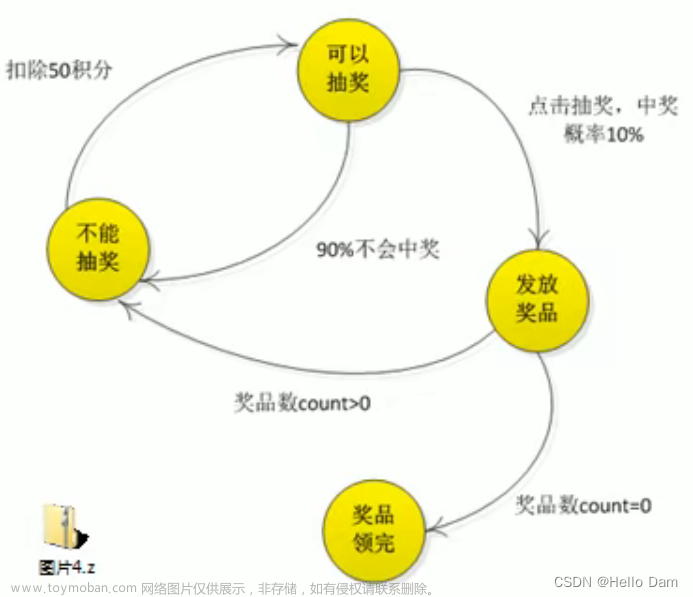任务要求
使用串口发送5个字节数据到电脑
1、ADC采样的结果为12位,如何使用串口发送
2、16位数据,如何通过串口发送
3、多个字节的数据,如何通过串口发送
UART规定,发送的数据位只能有6、7、8位,若直接修改发送位数,接收模块将不适配。
两种情况:
1、没有开始发送(上一次的发送已经完成,新的40位数据的发送请求没有出现)
2、40位数据的发送请求信号已出现
3、依次发送数据中
状态:
等待传输请求(Trans_Go);
Data <= Data40[7:0];
产生Send_Go,启动发送第一个字节;
接着等待Tx_Done;
判断Data40是否发送完成,若完成:回到状态一等待Trans_Go;
若未完成:启动下一个8位数据的发送;
任务:优化状态机,实现只要2个或3个状态实现发送的功能,并且易于修改为发送任意个字节的数据。
仿真波形
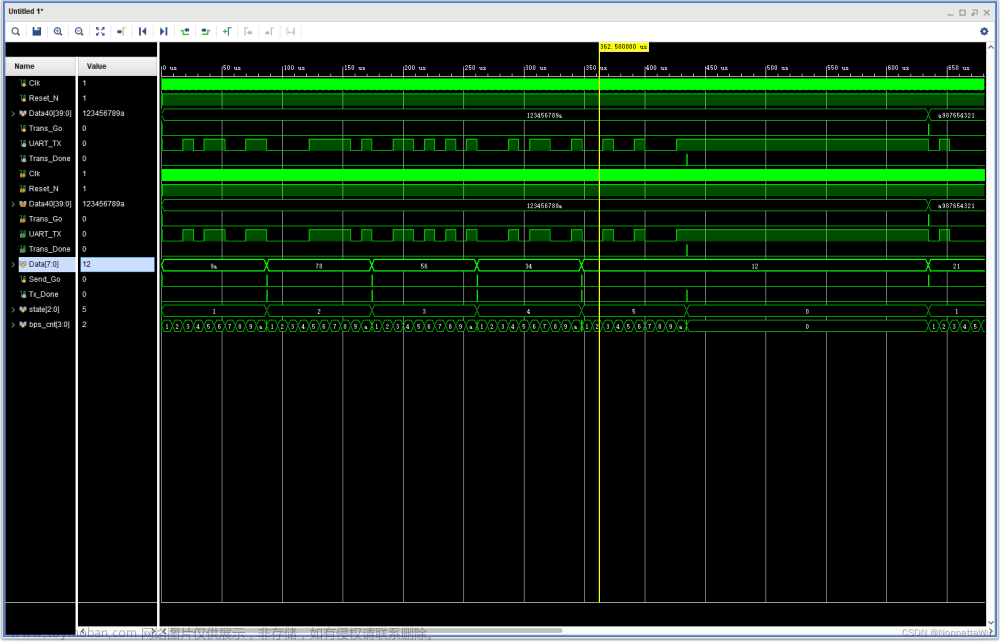 文章来源:https://www.toymoban.com/news/detail-658976.html
文章来源:https://www.toymoban.com/news/detail-658976.html
设计文件程序
Method_One
/*Method_One*/
/*该程序较冗余,建议参考Merthod_Two*/
module UART_PC(
Clk,
Reset_N,
Data40,
Trans_Go,
UART_TX,
Trans_Done
);
input Clk;
input Reset_N;
input [39:0]Data40;
input Trans_Go;
output UART_TX;
output reg Trans_Done;
reg [7:0]Data;
reg Send_Go;
wire Tx_Done;
UART UART(
.Clk(Clk),
.Reset_N(Reset_N),
.Data(Data),
.Send_Go(Send_Go),
.Baud_Set(4),
.UART_TX(UART_TX),
.Tx_Done(Tx_Done)
);
reg [2:0]state;
always@(posedge Clk or negedge Reset_N)
if(!Reset_N)begin
state <= 0;
Data <= 0;
Send_Go <= 0;
Trans_Done <= 0;
end
else if(state == 0)begin
Trans_Done <= 0;
if(Trans_Go)begin
//产生Send_Go 启动发送第一个字节
Data <= Data40[7:0];
Send_Go <= 1;
state <= 1;
end
else begin
//等待传输请求_Trans_Go
Data <= Data;
Send_Go <= 0;
state <= 0;
end
end
else if(state == 1)begin
if(Tx_Done)begin
Data <= Data40[15:8];
Send_Go <= 1;
state <= 2;
end
else begin
//等待该字节数据发送完成
Data <= Data;
Send_Go <= 0;
state <= 1;
end
end
else if(state == 2)begin
if(Tx_Done)begin
Data <= Data40[23:16];
Send_Go <= 1;
state <= 3;
end
else begin
//等待该字节数据发送完成
Data <= Data;
Send_Go <= 0;
state <= 2;
end
end
else if(state == 3)begin
if(Tx_Done)begin
Data <= Data40[31:24];
Send_Go <= 1;
state <= 4;
end
else begin
//等待该字节数据发送完成
Data <= Data;
Send_Go <= 0;
state <= 3;
end
end
else if(state == 4)begin
if(Tx_Done)begin
Data <= Data40[39:32];
Send_Go <= 1;
state <= 5;
end
else begin
//等待该字节数据发送完成
Data <= Data;
Send_Go <= 0;
state <= 4;
end
end
else if(state == 5)begin
if(Tx_Done)begin
Send_Go <= 0;
Trans_Done <= 1;
state <= 0;
end
else begin
//等待该字节数据发送完成
Data <= Data;
Send_Go <= 0;
state <= 5;
end
end
endmodule
Method_Two
module UART_PC_Better(
Clk,
Reset_N,
Data40,
Trans_Go,
UART_TX,
Trans_Done
);
input Clk;
input Reset_N;
input [39:0]Data40;
input Trans_Go;
output UART_TX;
output reg Trans_Done;
reg [7:0]Data;
reg Send_Go;
wire Tx_Done;
UART UART(
.Clk(Clk),
.Reset_N(Reset_N),
.Data(Data),
.Send_Go(Send_Go),
.Baud_Set(4),
.UART_TX(UART_TX),
.Tx_Done(Tx_Done)
);
reg [2:0]state;
always@(posedge Clk or negedge Reset_N)
if(!Reset_N)begin
state <= 0;
Data <= 0;
Send_Go <= 0;
Trans_Done <= 0;
end
else begin
case(state)
0: begin
Trans_Done <= 0;
if(Trans_Go)begin
//产生Send_Go 启动发送第一个字节
Data <= Data40[7:0];
Send_Go <= 1;
state <= 1;
end
else begin
//等待传输请求_Trans_Go
Data <= Data;
Send_Go <= 0;
state <= 0;
end
end
1: begin
if(Tx_Done)begin
Data <= Data40[15:8];
Send_Go <= 1;
state <= 2;
end
else begin
//等待该字节数据发送完成
Data <= Data;
Send_Go <= 0;
state <= 1;
end
end
2: begin
if(Tx_Done)begin
Data <= Data40[23:16];
Send_Go <= 1;
state <= 3;
end
else begin
//等待该字节数据发送完成
Data <= Data;
Send_Go <= 0;
state <= 2;
end
end
3: begin
if(Tx_Done)begin
Data <= Data40[31:24];
Send_Go <= 1;
state <= 4;
end
else begin
//等待该字节数据发送完成
Data <= Data;
Send_Go <= 0;
state <= 3;
end
end
4: begin
if(Tx_Done)begin
Data <= Data40[39:32];
Send_Go <= 1;
state <= 5;
end
else begin
//等待该字节数据发送完成
Data <= Data;
Send_Go <= 0;
state <= 4;
end
end
5: begin
if(Tx_Done)begin
Send_Go <= 0;
Trans_Done <= 1;
state <= 0;
end
else begin
//等待该字节数据发送完成
Data <= Data;
Send_Go <= 0;
state <= 5;
end
end
default:
begin
Data <= Data;
Send_Go <= 0;
state <= 0;
end
endcase
end
endmodule
仿真文件程序
`timescale 1ns / 1ns
module UART_PC_tb();
reg Clk;
reg Reset_N;
reg [39:0]Data40;
reg Trans_Go;
wire UART_TX;
//隐实例化
UART_PC_Better UART_PC(
Clk,
Reset_N,
Data40,
Trans_Go,
UART_TX,
Trans_Done
);
initial Clk = 1;
always #10 Clk = !Clk;
initial begin
Reset_N = 0;
Data40 = 0;
Trans_Go = 0;
#201;
Reset_N = 1;
#200;
Data40 = 40'h123456789a;
Trans_Go = 1;
#20;
Trans_Go = 0;
@(posedge Trans_Done);
#200000;
Data40 = 40'ha987654321;
Trans_Go = 1;
#20;
Trans_Go = 0;
@(posedge Trans_Done);
#200000;
$stop;
end
endmodule
任务_板级验证结果
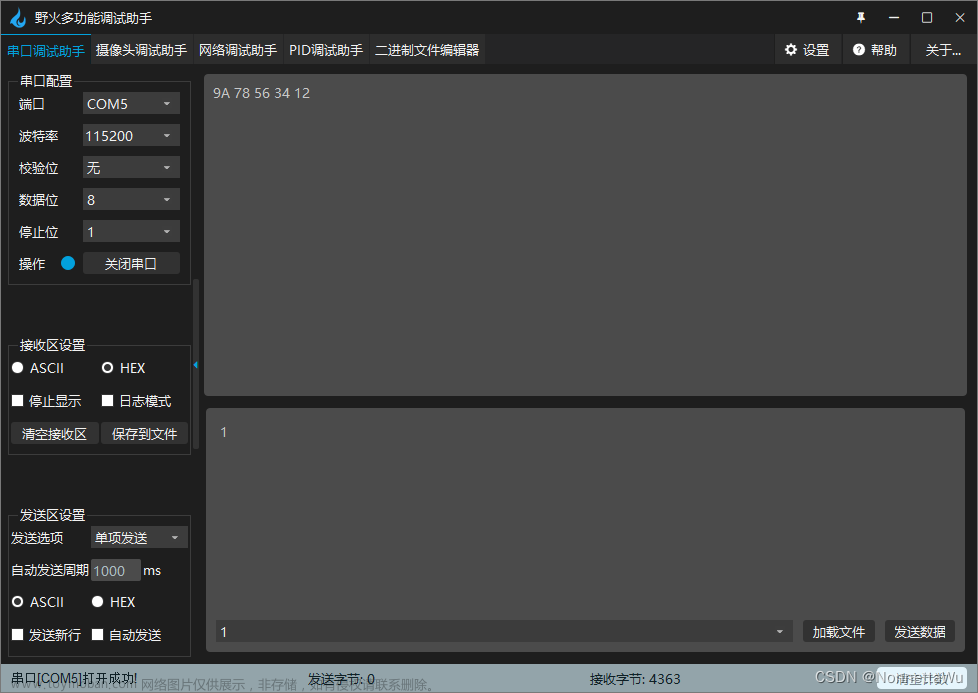 文章来源地址https://www.toymoban.com/news/detail-658976.html
文章来源地址https://www.toymoban.com/news/detail-658976.html
到了这里,关于FPGA入门学习笔记(十)Vivado设计状态机实现UART多字节数据发送的文章就介绍完了。如果您还想了解更多内容,请在右上角搜索TOY模板网以前的文章或继续浏览下面的相关文章,希望大家以后多多支持TOY模板网!


